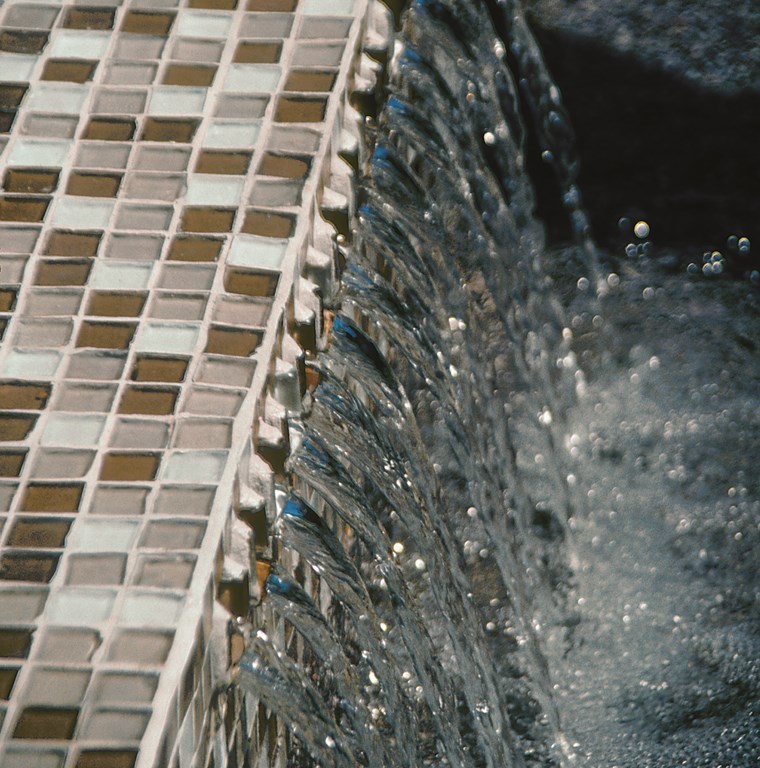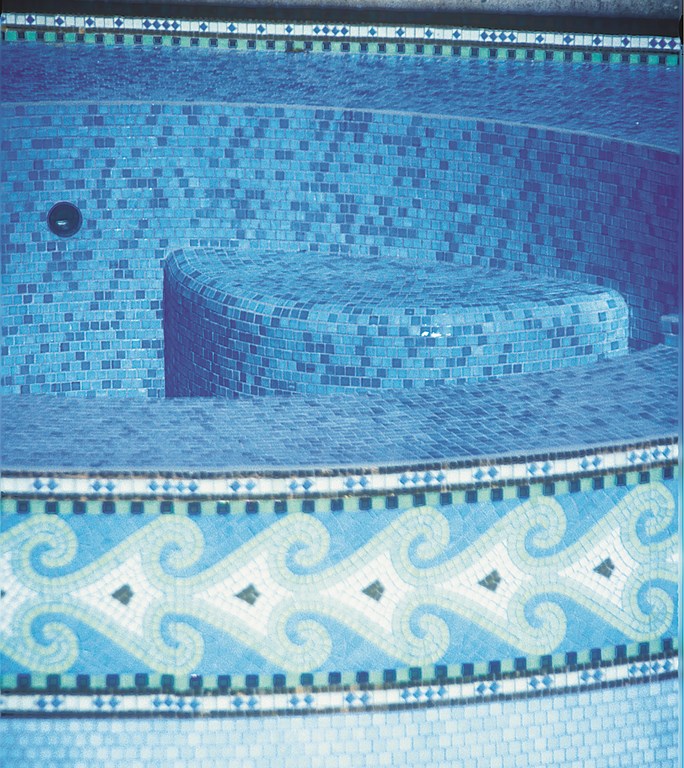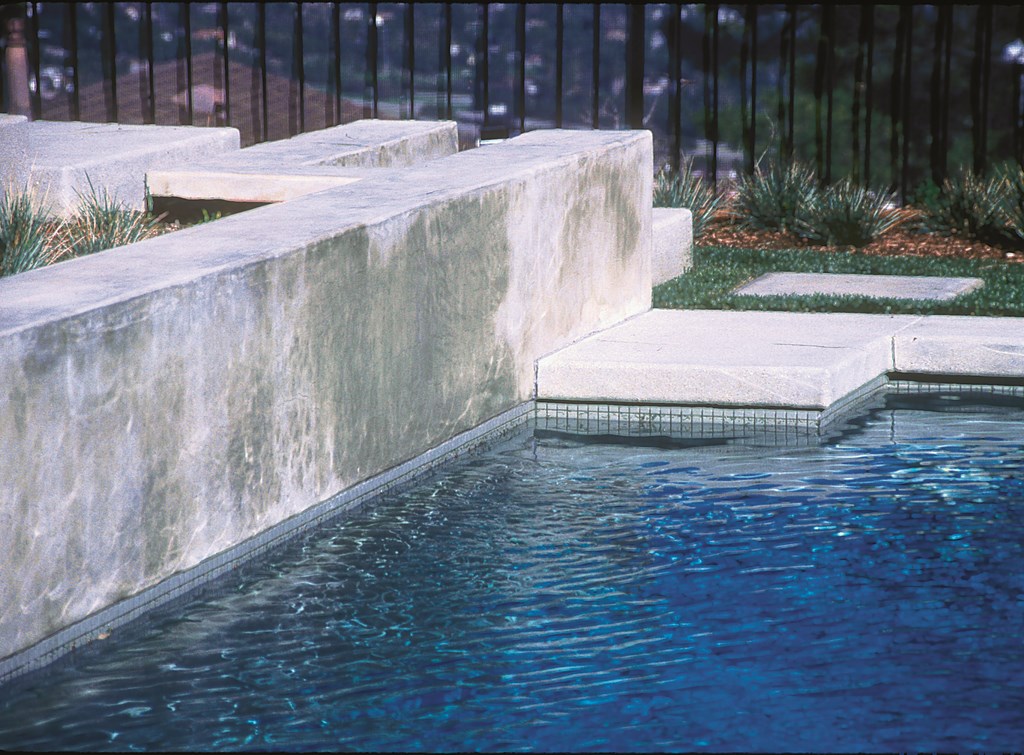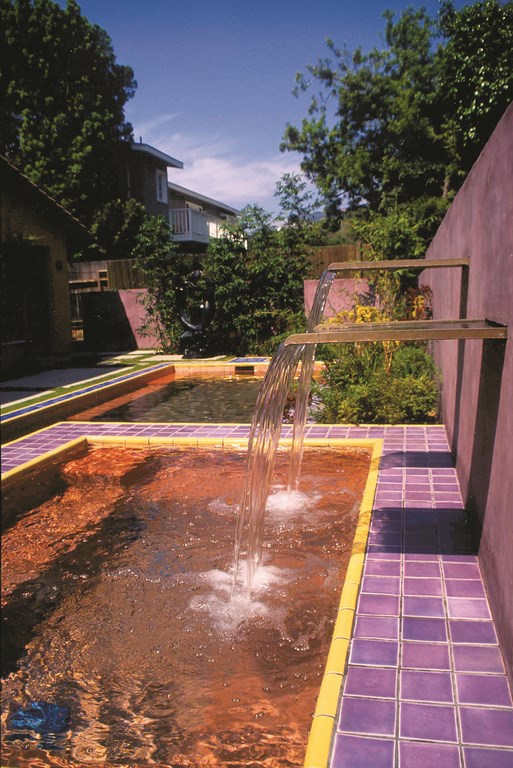Miles of Tiles
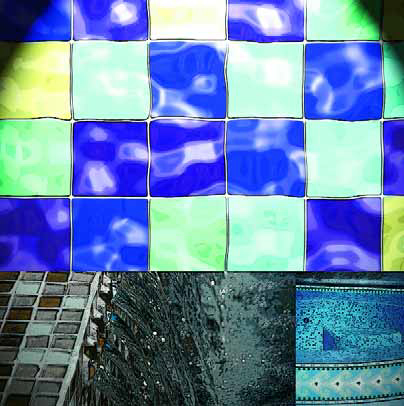
I know I’ve quoted or paraphrased Ernest Hemingway on this point before, but it bears repeating once again: Anything that was ever any good, you pay for.
I’d go so far to say I’ve based my entire business philosophy on that basic idea. For one thing, there’s an essential truth to what he’s saying. For another, I see its clear application to watershaping on a variety of levels – particularly when it comes to the materials we use in creating our “art.” Indeed, a huge part of giving clients the unique elegance and beauty they so often crave involves understanding and appreciating the aesthetic potential embodied in the materials we choose.
In my own work, I make no bones about the fact that I love working with tile: The range of colors, textures and visual effects you can achieve by using it as a key design component is virtually limitless – if, that is, you know what you’re doing and are willing to step beyond the usual palette of options generally associated with the pool industry.
When you take that big step away from the standard selections and applications, you jump into a dazzling array of choices. Tile can be used in a subtle way, for example, as a waterline element that blends seamlessly with the colors of other parts of the composition. Or it can be used boldly to make singular statements that capture the attention of the viewer, as is the case with colorful mosaics or medallions. Or it can lend a rich visual quality to surfaces in a way that defines the entire design.
MY FAVORITE THINGS
With a design element of tile’s visual power and diversity, it’s important to understand what you’re trying to achieve – in other words, how it will fit as part of the overall design scheme. You also have to be familiar with the options available on the market and know how the choices you make will affect issues including cost, lead times for materials delivery, installation requirements and even the physical configuration of the design itself.
The importance of those issues comes into much clearer focus when you get specific. To that end, I’ll use this edition of “Details” to highlight products I turn to over and over again as I approach my projects. The list isn’t exhaustive – just a rundown of some favorites.
The plain fact is, there are literally hundreds of tile manufacturers and suppliers out there these days. As designers, it’s our responsibility to familiarize ourselves with these options, and through the years, I must say I’ve enjoyed the process of discovering tile products I can use to excite my customers and beautify my work.
Next month, I’ll discuss how I approach and use some specific products in the design-development and materials-selection processes. This time, I simply want to identify a short list of suppliers whose products I’ve found to be especially exciting with respect to both design possibilities and client response.
Let’s start the listings with glass tiles. These products come from a huge variety of sources in the United States and from places as geographically diverse as China, Italy and Mexico. In fact, I suspect you could spend years exploring nothing other than the glass-tile market and still not find all of the suppliers.
CLEAR BEAUTY
Making selections among glass tiles is all about understanding the qualities of specific product lines. What’s so exciting is that they’re all somewhat different – variations in colors, textures, levels of translucence, thicknesses and even how they are used or installed. The trick is to find a product that fits the design you’re trying to create.
The list below represents good places to find that perfect fit:
[ ] Boyce & Bean. Based in Oceanside, Calif., this company produces some of the most beautiful glass tile I’ve ever seen. Among the company’s claims to fame is that its glass is produced in the same Illinois facility that once supplied Tiffany (and also made the best marbles in the land).
It’s a cast tile, very clear and, by comparison to others, very, very thick. The company produces a fairly limited set of products in dichron glass as well as tiles infused with metals and beautifully milky “moon glass” mosaics. They also make a tile series in soft, sea-foam greens that come in various round-edged shapes. The visual depth, smooth textures, rich colors and incredible reflective qualities lend a jewel-like appearance to watershapes – stunning stuff.
The main tile line comes in iridescent, sandblasted and opaque finishes and has a soft look to it because casting sets the material up with slightly rounded edges. The color palette is fairly limited, but even so, it’s the most beautiful tile I’ve ever seen and is a wonderful choice for the right setting with clients who are looking for something truly elegant.
[ ] Oceanside Glasstile. This firm, based in Carlsbad, Calif., manufacturers its tile mostly from recycled glass. The abundance and variety of this source material allows the company to produce its exquisite tiles in a beautiful variety of colors. Each tile is slightly different with irregular square shapes (within, of course, a tight range of tolerances). What I like most about the tile is that the slight irregularities actually make them more beautiful – as though they were hand-made.
| This raised spa and its spillways are wrapped in glass tiles produced by Oceanside Glasstile. The photograph doesn’t do justice to the impression of depth conveyed when light catches these tiles in just the right way. |
I’ve used these products in a large number of projects, including several that have been profiled in WaterShapes. I’ve used them to cover everything from small details inside and outside the water to thermal ledges and entire interior surfaces, often developing custom mixes of tile colors to suit specific settings. The fact that the company makes a full range of bullnose, quarter-round and other specialty pieces is a key to this range of applications.
These tiles are produced with variations in thickness, so they sometimes require more skill in the installation process. And I’ve received some comments from clients about sharp edges and the irregular feel of the surface. In a small number of cases, I’ve had to replace individual tiles to remedy these concerns – but to my mind, that’s a small price to pay for such timeless beauty.
[ ] Sicis. This company is based in Ravenna, Italy, and makes a variety of coordinated mosaic blends that cover a wide range of colors. Their iridescent tiles are simply stunning, but they also make subtler blends manufactured with traditional Italian “smalto” recipes that lean toward opacity as well as “waterglass” tiles that are beautifully transparent with slightly crackled finishes that give them unique reflectivity.
| The glass tiles made by Sicis can be used to create beautiful mosaics – or mixed and matched to provide stunning tile fields. As can be seen on the spa step at top, their small size lets them roll over an edge with ease. |
In my work with these tiles, I often mix tiles from all three product groups – iridescent, opaque and clear – to create blends that generate delightful underwater effects. The company doesn’t provide trim pieces, but the small size of the field tiles (they are just 3/8 inch square and quite thin in profile) lets them wrap over radiuses with beautiful results.
FEATS IN CLAY
When you move away from glass tile into the realm of porcelain and ceramic, it’s just as easy to find wonderful products – and another dizzying set of choices among suppliers.
In my work, I’ve steered away from mass-produced products in favor of those with particular characteristics that my clients and I find appealing. I also look to firms that are responsive, have consistent quality control and offer reliable delivery commitments.
[ ] American Olean. This Dallas-based company is a subsidiary of the massive Dal-Tile family of companies but has preserved something of its own identity and individuality. It produces porcelain tile in a wide variety of colors and sizes, and everything benefits from truly amazing quality control.
| When I want a waterline to disappear, I often use American Olean’s ceramic tiles in a color that matches the pool’s interior – in this case, a soft-green tile that visually fades into the soft-green plaster. |
I particularly love their greens and grays, which are beautiful when used in neutral color applications alongside, for example, green or French gray plaster, and I often work to match the plaster color to the tile to make the waterline effectively disappear.. The tiles also come mounted in a “dot matrix,” meaning there are rubber dots between each tile that maintain remarkably consistent spacing across a field of tiles. That’s a terrific way to package these products from the installer’s viewpoint.
[ ] Busby Gilbert. This firm, which is based in Van Nuys, Calif., creates a rainbow of beautiful ceramic tiles – the broadest palette I’ve encountered. This is the company that provided the tile for my controversial “red pool,” and I know the overall impression made by that project would have been diminished dramatically without the fantastic colors the company lent to the cause.
| The advantage of working with Busby Gilbert’s ceramic tiles is the company’s adventurous approach to colors and capacity to develop custom matches as needed – a key to creating bold projects such as my ‘red pool.’ |
It’s also an adventurous firm: They’ll create multi-colored tiles, for example, all hand-made and hand-glazed. They’ll work with you on custom colors as well (and do incredibly well at it in my view), and they also offer a full line a “accessory” pieces – bullnoses, quarter rounds, v-caps and beaks. Through the years, I’ve been particularly impressed by their responsiveness and creative flexibility.
[ ] Craig Bragdy Design. This company, based in Denbigh, Wales, makes unusual tile – to put it mildly. Basically, these folks create painted masterpieces in ceramic – a whole different world when it comes to creativity and a whole different level when it comes to cost.
You give them the color palette, define what you want with respect to design elements and motifs and they get back to you with sketches for review and revision. I have a job in the works right now that will include a complex illustration of a coral reef with dozens of sea creatures as well as a beautiful “beach” of maize-colored sand. (Only part of the pool – about 250 square feet – will feature this tile; the rest – about 1,400 square feet – will be covered in a jog-jointed blend of Sicis tile, including all three appearance types mentioned above.)
This is an elaborate, aquatically themed design, but not unexpected in a swimming pool. With this firm, however, you’re definitely not limited to seascapes: You can create anything you want with them – abstract, figurative, photographic, you name it.
As I mentioned above, these are just a handful of the resources available to you as watershape designers. Even here, however, you’ll find a range of options that will lend power and flexibility to your work.
The time you spend in exploring these and countless other options is nothing less than an investment in your ability to create beautiful watershapes that will be well worth the cost. When I work with these products, I can’t help thinking that Mr. Hemingway would be pleased!
David Tisherman is the principal in two design/construction firms: David Tisherman’s Visuals of Manhattan Beach, Calif., and Liquid Design of Cherry Hill, N.J. He can be reached at [email protected]. He is also an instructor for Artistic Resources & Training (ART); for information on ART’s classes, visit www.theartofwater.com.











